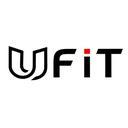
UFiT
UFiT is a strong universal and comprehensive financial infrastructure. UFiT is not a base blockchain, it is rather a decentralized protocol-layer facility, and its design goal is to be deployable on any mainstream blockchain supporting smart contract with minimum cost. By definition, a financial infrastructure is a product that supports other financial products with depth and breadth, that is to say, the functionalities that it can ultimately demonstrate must not be singular. Presently there are many products in DeFi capable of delivering singular financial functions, while many infrastructure projects tend to be excessively tilted to the baseline networks, making them less likely to focus on targeted financial applications. UFiT is designed for a broad and specific application cluster, that is, any application that needs custody, clearing, pledging, or asset synthesis. This cluster includes such application as STO, heterogeneous multi-asset collateralization, and other securitization practices in the rapidly growing DeFi domain, as well as the application of passive and active asset management. In the centralized real world, these applications rely on isolated special institutions to perform their functions. The mission of UFiT, therefore, is to support these applications with a unified and complete infrastructure on blockchain networks. Techniques adopted by UFiT is devised according to the above requirements of functional generality. In order to achieve a high degree of scalability and deployability, a generic product delivering multiple functions will inevitably require some important trade-offs. In view of the present status of blockchain technology itself, perfect structural design is unrealistic. Therefore, the effectiveness of UFiT’s technical treatments depend on its DAO governance architecture. With such a trade-off decision, it becomes a software protocollayer facility, having the least dependence on physical network, and capable of immediately supporting cross-chain and heterogeneous assets. In short, UFiT relies on three technical means (NFTAL Asset Abstraction Layer, UNFT asset description structure, and N-to-1 mapping mechanism) to support four types of financial applications (heterogeneous multi-asset custody, clearing of heterogeneous asset securitization, heterogeneous multi-asset collateralized borrowing, and heterogeneous multi-asset management). Come with them are innovative financial tools such as the option-driven and game-like risk control for the application of borrowing, the proceeds vault management and portfolio constraints management for the application of asset management, etc.
